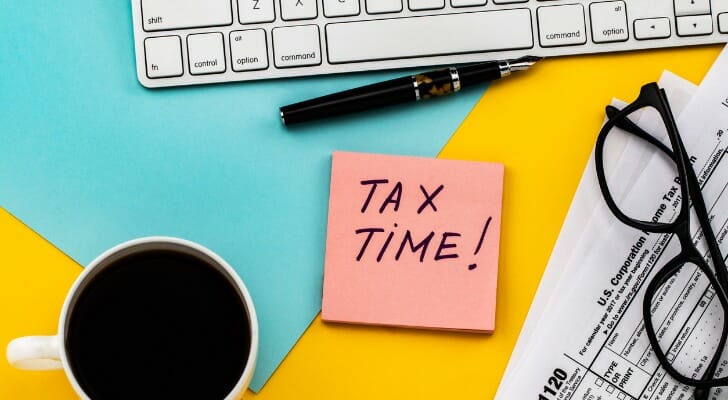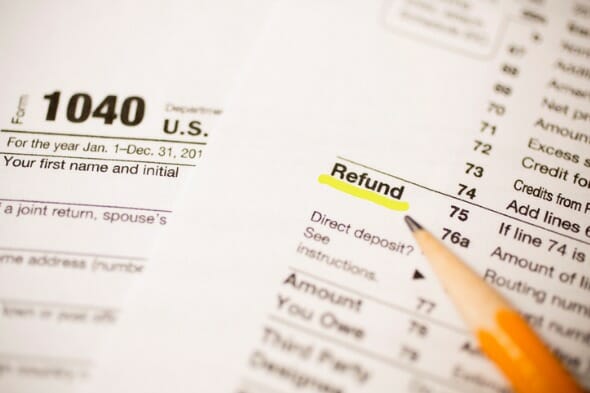After completing the often time-consuming process of filing your taxes, you may quickly turn your attention to when your refund will arrive. Many taxpayers find themselves asking how long it takes to receive a federal tax refund, only to discover that IRS processing times can vary. Having an idea of the typical refund timeline can help you plan your budget more effectively for the year ahead.
If you want to look beyond tax season and build a broader financial strategy, a financial advisor can help you develop a comprehensive financial plan for the future.
How Long Will My Tax Refund Take?
When you get your tax refund will depend largely on how you file your return. The fastest option is to e-file your return and to receive your refund via direct deposit. The majority of taxpayers who choose this option will receive their refunds within 21 days. That means your bank will have your refund within three weeks from the day the IRS accepts your tax return. Then it may take up to a few additional days for your bank to make the funds available to you.
If you file a paper return or if you want to receive your refund as a paper check, your return will take longer to process. Filing a paper return and receiving your refund as a paper check will take the longest to process at two months or more. So if you’re inclined to sit around asking, “How long does it take to get a tax refund?” you might want to consider e-filing, or at least direct deposit.
The table below will give you an idea of how long it typically takes to get a tax refund.
Federal Tax Refund Schedule
| Filing Method | E-File, Direct Deposit | Paper File, Direct Deposit | E-File, Check in Mail | Paper File, Check in Mail |
|---|---|---|---|---|
| Time from the day you file until you receive your refund* | 1-3 weeks | 3 weeks | 1 month | 2 months |
Please note: These are just guidelines. Based on how you file, most filers can generally expect to receive a refund within these time frames.
The IRS typically starts accepting returns in the last week of January. While the start of the 2025 tax filing season has not yet been announced, in 2025, the 2024 tax filing season began on January 27.
Here’s a detailed breakdown of when in 2026 taxpayers could get their 2025 refund based on estimates from previous tax years:
Estimated 2026 IRS Refund Schedule
| Taxes Accepted | Direct Deposit | Paper Check |
|---|---|---|
| Week of January 27 | February 7 | February 14 |
| Week of February 3 | February 14 | February 21 |
| Week of February 10 | February 21 | February 28 |
| Week of February 17 | February 28 | March 7 |
| Week of February 24 | March 7 | March 14 |
| Week of March 3 | March 14 | March 21 |
| Week of March 10 | March 21 | March 28 |
| Week of March 17 | March 28 | April 4 |
| Week of March 24 | April 4 | April 11 |
| Week of March 31 | April 11 | April 18 |
| Week of April 7 | April 18 | April 25 |
| Week of April 14 | April 25 | May 2 |
Tax Returns That Include the EITC or ACTC
If you claimed either the Earned Income Tax Credit (EITC) or the Additional Child Tax Credit (ACTC), you may have to wait a bit longer for your refund. Law requires the IRS to hold refunds from these returns until mid-February. You shouldn’t expect the refund to hit your bank account until late February, according to the IRS. If you don’t elect for direct deposit or if there are problems with your return, you can expect the refund to take longer.
How to Check Your Tax Refund Status

Are you the sort of person who constantly wonders, “How long does it take to get a tax refund?” If you want to check the status of your federal tax refund, you can use the Where’s My Refund? on the IRS website. You can also access that tool on the IRS2Go mobile app. Your return’s status will usually be available within 24 hours if you file electronically. If you mailed a paper return, it will take at least four weeks before you can check the status of your return.
You’ll need three pieces of information to check your return’s status:
- Your Social Security number (SSN)
- Your filing status
- The exact dollar amount of your expected refund
If you filed a return with the EITC or ACTC, the IRS says you can expect your refund status to update by late February.
Bottom Line

How long it takes to get your tax refund will depend on how and when you file your tax return. The best way to get your refund quickly is to e-file your return and elect to receive the refund by direct deposit. For the 2025 tax year (filed in 2026), the vast majority of e-filers, who also use direct deposit for refunds, can expect to receive their refund within 21 days, as has been the case in previous years.
Sending a paper return or receiving your refund as a paper check will potentially slow down processing by months. The IRS also processes returns more slowly at the beginning and end of the tax season. That’s because the majority of taxpayers file during those times.
Tips for Getting Through Tax Season
- Taxes are just one aspect of your overall financial life. A financial advisor can help you plan your retirement, and estate and optimize your tax strategy for all of your financial goals. Finding a financial advisor doesn’t have to be hard. SmartAsset’s free tool matches you with vetted financial advisors who serve your area, and you can have a free introductory call with your advisor matches to decide which one you feel is right for you. If you’re ready to find an advisor who can help you achieve your financial goals, get started now.
- If you still need to file your taxes, make sure to consider all of your filing options. Two of the largest tax-filing services are H&R Block and TurboTax. Both are easy to use and offer step-by-step guidance to help you maximize your return. Check out SmartAsset’s comparison of TurboTax and H&R Block to see which one is better for you.
- State governments use their own systems for handling tax returns. In some states, you’ll get your refund within a couple of days, while other states will take weeks or months to process. Learn how to check your state tax refund status.
- If you find yourself relying on your tax refund to make ends meet, you may be able to make some changes to your tax withholding. Claiming more or fewer allowances on your W-4 will impact how much tax your employer removes from checks. Withholding less in taxes will mean more take home pay. If you receive a big refund come tax time, there may be room for you to increase your allowances.
Photo credit: ©iStock.com/fstop123, ©iStock.com/Eva-Katalin, ©iStock.com/alex_skp
